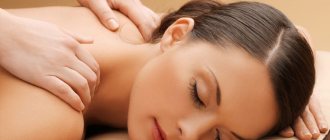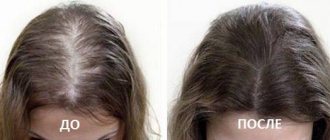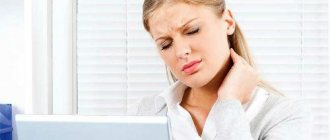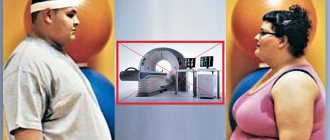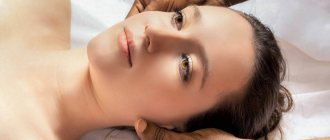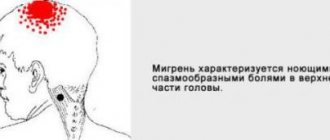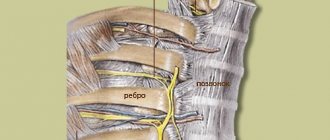If you suffer from headaches of unknown origin, you should consult a doctor to find out the cause. Self-medication in this case will do more harm than good. If you know for sure that you are experiencing tension pain, you can help yourself by mastering several head massage techniques.
Many people read the body's needs intuitively, without any special knowledge. By stroking a crying child's head, we calm the baby and relieve anxiety, and rubbing the temporal area in order to increase concentration actually gives a certain result. Based on this, we can draw a simple conclusion: competent influence on certain points leads to an improvement in the general condition, and this should be used!
How it works?
The scalp is closely connected to the brain, and therefore the impulses launched during exposure to it quickly penetrate the cerebral cortex and limbic structures, harmonizing the work of the whole body. Speaking about massage and acupuncture, we should not forget about Eastern philosophy, which indicates that the entire person is “permeated” with biologically active points, each of which is responsible for the functioning of specific organs and systems. Moreover, the vast majority of such zones are located on the head.
Scalp massage has been proven to:
- Activates blood circulation and lymph flow.
- Improves nutrition of soft tissues.
- Relieves muscle tension.
- Improves the mood and general condition of the patient.
Similar properties of the procedure are reflected in a person’s appearance: after just a few sessions, complexion and hair condition improve, fine expression wrinkles disappear and the oval of the face is tightened.
Thus, facial massage can be recommended for the treatment of headaches and neurological pathologies, such as insomnia, disease prevention and for rejuvenation.
Headache in the frontal region
Why does my head hurt in the forehead area? It's simple: the stomach meridian runs along the forehead. Therefore, when you feel hungry, have digestive problems, overeat, heartburn or other problems associated with the gastrointestinal tract, a frontal headache occurs.
A trivial example: we are hungry and have a headache. We ate and the headache went away. And if you are attentive, then remember that in this case it is the forehead that hurts.
However, it also happens that after eating, the headache does not go away. At this point, use the following combinations of points:
- EX2 (Yin Tang)
- GV23 (Shang Sing)
- GB14 (Yang Bai)
- UB2 (Tsi Ju)
- LI4 (He Gu)
- ST44 (Nei Ting)
1 of 6
EX2 (Yin Tang)
Indications for head massage
Head massage is indicated for people with neurological pathologies. First of all, these are neurosis, neuritis, asthenia, chronic stress and fatigue, lack of strength, drowsiness and fatigue, insomnia, headache, decreased concentration, memory loss, encephalopathy and a number of other conditions.
Head massage is a medical procedure that has contraindications. These include the following conditions: acute inflammatory processes, elevated body temperature, blood and skin coagulation disorders, cancer, infections and mental disorders.
LiveInternetLiveInternet
In the life of every person, life situations periodically arise that lead to neuroses, deep feelings, and stress.
and as a result - to neuropsychological tension, headaches, anxiety and other disorders with various unpleasant consequences.
The difficult conditions of today, in which modern man has to live and work, require us to constantly train and expand the range of adaptive capabilities, timely and adequate reactions of the internal organs and systems of our body and its functions.
Among other auxiliary methods of stabilizing well-being and performance, massage of biologically active points (BAP) occupies an effective place.
With this massage technique the following effects are possible:
- normalization of blood pressure;
- relieving spasms of blood vessels in the brain or heart;
- relieving fear or discomfort during menstruation;
- improving breathing and relieving gastrointestinal discomfort;
- improved sleep and sports performance;
- quitting smoking and reducing dependence on alcohol and drugs.
Depending on how you feel, we can use a tonic, soothing or normalizing version of self-massage.
The tonic (stimulating) option is used for decreased ability to work, mood and apathy of various origins and involves rapid rhythmic pressing, rubbing, shaking and kneading. Duration of performance – 1-2 minutes.
Normalizing (stabilizing) massage is used for anxiety, confusion, self-doubt, etc. This option provides for a moderate pace of massage techniques and lasts 2 - 3 minutes.
Massage for headaches, tension and stress
So, if you need a simple and quick remedy for headaches, stress and anxiety, try this simple method.
Acupressure self-massage is usually performed with the tips of the thumb, index, and sometimes middle fingers of the left hand (whichever is more convenient), starting with the nail phalanx of the little finger (and then other fingers).
To do this, you need to pinch the nail phalanx with the fingers of your left hand, press and, using wrapping movements, knead and rub the BAP of the nail phalanx of the right little finger. Next, massage of the nail phalanges of the IV, III and II fingers is performed in turn.
Then the HE-GU point is massaged (for details, see How to quickly relieve a headache using the “He-Gu” point)
). During her massage, all techniques and vibration are performed - short pressure and rocking movements (3 - 5 times in one second).
Finally, a massage of the nail phalanx of the thumb is performed. Then the second brush. Self-massage of the biologically active points of the left hand begins with a massage of the nail phalanx of the thumb, then the HE-GU point, the nail phalanges of the 2nd, 3rd, 4th and 5th fingers - that is, in reverse order.
The duration of self-massage of all active points is 2–4 minutes. Improvement in well-being is observed after massage of the points of the right hand, and normalization of the condition occurs after self-massage of all active points of the hands is completed.
Sometimes it happens (at the beginning of teaching the technique) that the effect of the massage is not complete. In this case, you should repeat the entire session again, or even twice. When self-massage is performed masterfully, its effect lasts 2-3 hours or more. Such self-massage will help to quickly relieve tension, eliminate anxiety, stress, headaches, and also help get rid of other unpleasant sensations and negative mental states. Source
Help yourself:
Magic points for brain health and activation
Qigong - 3. Acupressure for headaches
The healing power of the palm
Basic techniques and techniques
Professional massage therapists use only their hands during the procedure, while at home you can resort to the help of mechanical or electrical devices.
- Classic massage is a sequential performance of various movements - stroking, kneading, pressing and rubbing.
- Ayurvedic – aimed at working out biologically active points. For maximum relaxation, it is often done with pleasant music and aromatic oils.
- Vacuum massage has the most intense effect on soft tissue. Using special devices, the specialist normalizes blood circulation and lymph flow.
The easiest way to do a massage at home is to relieve headaches. To do this, you need to influence the points located:
- At the base of the eyebrows and in the center of the eyebrow area.
- In the hole under the back of the head.
- On the temples.
- In the center of the cheekbones.
- In an area located 10 cm down from the base of the skull and 15 cm to the side of the spinal column.
The exposure time for each point should be at least 10 seconds. If necessary, you can apply oils or ointments with a warming effect.
You can sign up for the procedure, including lymphatic drainage massage, by phone.
How to relieve headaches without pills
Feng Chi point or Wind Lake (VB 20), how to find it. Translated from Chinese, “fen” means wind, and “chi” means lake. It is located at the base of the skull, symmetrically on both sides of the spine in a depression resembling a lake.
At this point, pathogenic wind enters the body, causing a lot of different diseases.
It is highly effective in relieving headaches associated with:
- temperature,
- chills;
- diseases of the nose (runny nose, nasal congestion);
- throat diseases (cough, sore throat),
- eye diseases (eye sores, conjunctivitis, blurred and decreased visual acuity, red eyes),
- dizziness,
- tension in the neck muscles,
- tinnitus,
- pain in the body and joints.
Feng Fu point or Wind Palace (VG 16) is an unpaired point. It is located between the bones of the base of the skull and the first cervical vertebra. In this place, you can feel the depression well with your fingers. It is considered the most vulnerable place on the human body, to which the brain is not protected by either bone plates or vertebrae. This area contains only muscle tissue and skin.
Nerve fibers of the suboccipital and occipital zones of the head and two arteries supplying the brain with blood pass through it. Behind them is the medulla oblongata, whose functions are the processes of breathing, swallowing, salivation, and blood pressure control.
Behind the medulla oblongata there are special formations of the brain - the pituitary gland and hypothalamus.
Impact on the Feng Fu point relieves pain in the occipital, suboccipital, parietal, and temporal areas of the head. Calms the nervous system, helps restore vision, eliminates dizziness and tinnitus.
Tou-wei point or Head Link. Finding it is more difficult. In the book by Lao Ming “Healing points of our body. Detailed atlas" states that it is located "in the frontal corner 0.5 cun above the hair growth line." It “connects” the frontal and temporal bones. When examined with your fingers, you can feel a small “dent” in its place.
The point is used to relieve dizziness and headaches (especially temporal pain), and is effective in the treatment of eye diseases.
The Cheng-jiang point, or Saliva Receiving Point, is located in the chin-labial groove, in the middle. The kidney area is projected onto it and is used to treat a wide range of diseases.
Use massage of the point for diseases of the head, headaches, swelling of the face, tension in the muscles of the back of the neck, and insomnia.
Additionally, they are effective for toothache, inflammation of the gums, dry mouth or excessive salivation, loss of voice, nasal polyps, pain in the lower jaw, and a feeling of extreme thirst (diabetes).
Which points to press in the forehead area:
Point Tsuan-zhu or Drilling bamboo (V 2) is symmetrical. Located at the junction of the bridge of the nose and the inner edge of the brow ridge. Indications for use are dizziness and headaches in the anterior region.
In addition to headache pain, massage of the point helps with poor vision, redness and inflammation of the eyes, nervous tics, pain in the cheek and face.
The Yin-tang point or Third Eye (VG 24) is called the Place of the Imprint of Fate. The point is located in the middle of the inner part of the eyebrows. At this place, Indian women draw a symbolic dot (bindi).
Massage of this area is done for headaches in the forehead, temples, and eye sockets associated with colds, runny nose, and swelling of the sinuses. Massage has an additional effect, relieving dizziness, insomnia, hiccups, nausea, and eye pain.
Point He-gu or Closed Gorge (Gl 4). By acting on the point you can relieve pain in the forehead, temples and crown of the head. In addition, tension in the shoulder muscles is relieved. It is believed that it helps relieve pain during labor.
Being a multifunctional point of the colon canal, it helps:
- for abdominal pain, fermentation in the large intestine;
- for diseases of the nasopharynx, eyes, vision;
- gynecological diseases associated with menstrual irregularities.
Located on the back of the hand. How to find: straighten all your fingers, press your thumb to your index finger. A tubercle forms at the base of two fingers, this will be the desired point.
Location of important points
Active points are located throughout the body, there are many of them. Having studied the cause of the appearance of an unpleasant symptom, its nature affects the points:
- Feng chi (gb 20) - located on the back of the head, at the base of the skull. Helps reduce pain caused by colds, migraines, nervous tension, and stress.
- Xin-hui (gv 22) - located in the upper part of the back of the head. It is massaged if discomfort is felt in the upper part of the head.
- Suan-lu (gb 5), Shan-yan (gb 4) - acupuncture points located on the temples. Massaging them reduces throbbing pain in the temporal region.
- Si-zhu-kun (sj 23) - the active point is located on the eyebrow line above the outer corner of the eye. It needs to be pressed when the headache is accompanied by tinnitus or migraine.
- Tsuan-zhu (v 2) - located on the inner edges of the eyebrows.
- Yin-tang (vg 24.5) - called the “third eye”. The point is asymmetrical, located at the intersection of the line of the eyebrows with the line of the bridge of the nose. Massaging the “third eye”, Tsuan-zhu, relieves pain in the temporal and frontal areas.
- Tian-rong - located on the back of the head, behind the auricle.
There are also additional points, they are on the arms and legs. By massaging them, you increase the analgesic effect:
- He-gu (li 4) - called “closed valley”. It is located on the hand, between the thumb and index finger. By massaging it, you reduce muscle tension in the forearms and relieve painful symptoms in the temporal and parietal areas. Massaging the He-gu point is useful during childbirth: Eastern sages claim that the painful sensations of a woman in labor are dulled. Such exposure is harmful for pregnant women, and premature birth is possible.
- Hou-si (sj 3) - called “back gorge.” The point is located on the outer edge of the palm, under the little finger.
- Ney-tin (st 44) - called “inner courtyard”. It is located between the second and third toe. Helps relieve frontal ailments.
Advice. First, work on the acupuncture of the occipital region, then begin massaging the points directly near the source of pain. Additionally, points on the legs and arms are stimulated.
